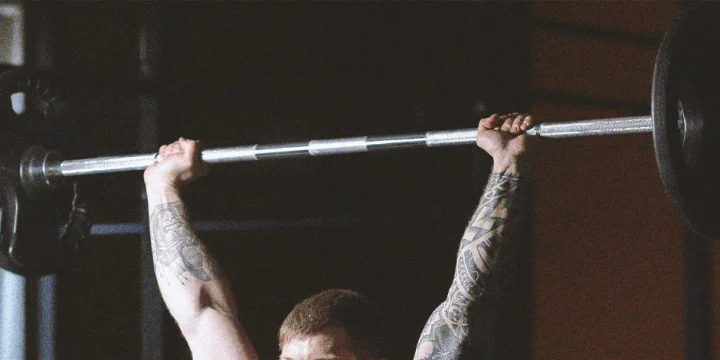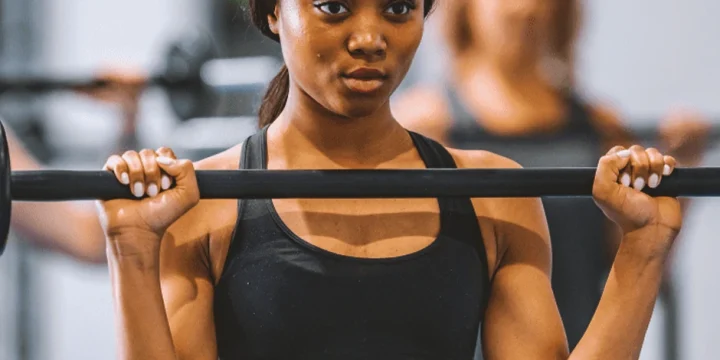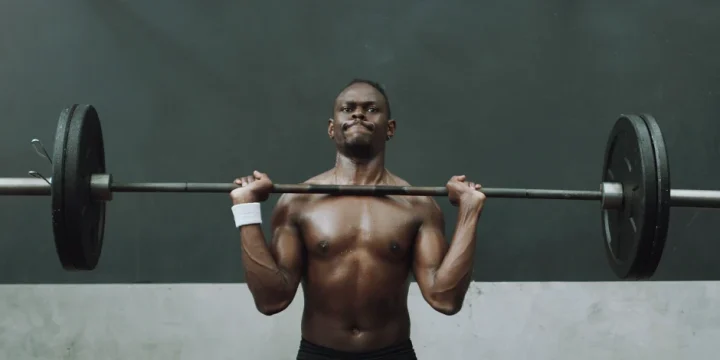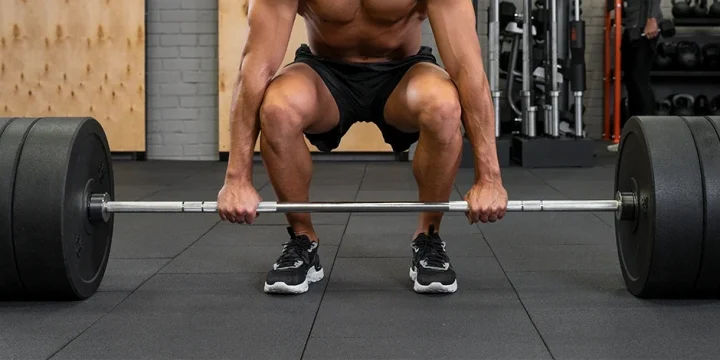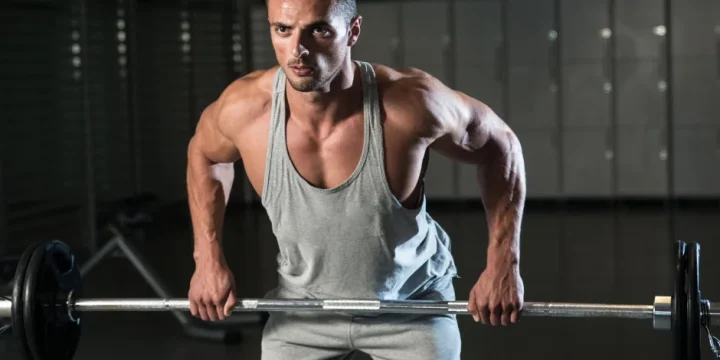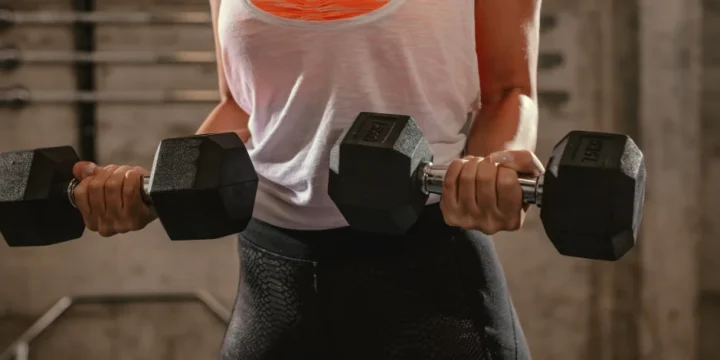The kettlebell squat is a great exercise to challenge your balance while toning your glutes, core, and lower back muscles.
However, without proper form, you will not be engaging your backside correctly, which may lead to injury and gaining any benefits.
As a fitness trainer, I will detail my skills and experience on the best way to perform the kettlebell squat, variations, benefits, muscles worked, and the common mistakes to avoid when performing the exercise.
Quick Summary
- A kettlebell squat is a dynamic strength-training exercise that enhances balance, tones glutes and core, and improves stability, utilizing various weights and postures for versatility.
- Common variations of kettlebell squats include front rack, sumo, split, overhead, and swing squats, each targeting different muscle groups and offering unique benefits.
- A 2012 study demonstrated that both traditional weightlifting and kettlebell training are equally effective in enhancing strength and power, highlighting the efficacy of kettlebell exercises.
- Personally, I find kettlebell squats to be an exceptional addition to fitness routines, offering a dynamic and comprehensive workout that caters to various fitness levels.
What Are Kettlebell Squats?
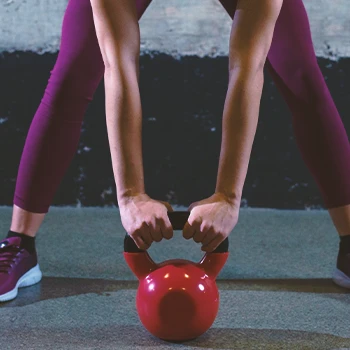
Kettlebell squats, also known as goblet squats, are a full-body workout targeting the hamstrings, core, glutes, quadriceps, calves, and lower back.
To perform them, stand with feet shoulder-width apart, holding a kettlebell at chest level, and squat while keeping your chest up.
This exercise builds leg strength more effectively than regular squats, and the double kettlebell variant offers an advanced challenge. This makes it a great compound workout.
"Kettlebell squats work every muscle in the body. You're mostly training the quadriceps and glutes. However, the kettlebell works on numerous muscles. You're also working on your arms, shoulders, and back."
- Amanda Hudock Hoffman, Certified Personal Trainer
How To Perform Kettlebell Squats

Don't skip this section even if you've acquired perfect squat form. Adding weight with a kettlebell brings a few extra form considerations to this exercise.
- Choose a kettlebell suitable for your fitness level to perform the workout correctly. Begin with a lighter weight and gradually raise as you become more acclimated to the action.
- Hold the kettlebell before the chest, maintaining the elbows close to your torso. Stand with your feet shoulder-width apart.
- As you descend your torso to the floor, bending your knees and hips, engage the core muscles to maintain your back straight.
- Check that the knees are tracking over the toes and that your heels support your weight.
- Throughout the exercise, keep your chest high and your gaze forward.
- Pause for one second at the bottom, then push back up through your heels, maintaining the kettlebell near your body.
- Repeat the motion for the required number of reps.
Learn More: Kettlebells vs Dumbbells: Which One Gets You the Most Gains
Kettlebell Squat Variations

As a personal trainer, I've guided numerous clients through various kettlebell squat variations. I've observed significant improvements in their mobility, power, and stability, especially with single-leg and staggered stances. These variations provide a unique challenge and benefits, distinguishing them from traditional barbell squats.
Here are some kettlebell squat variations to try.
1. Front Kettlebell Rack Squats
The front rack kettlebell squat, where the weights are held close to the shoulders and forearms, is a challenging variation that enables deeper squats and intense workouts.
It effectively strengthening your quadriceps, glutes, and hamstrings. Similar to the goblet squat, this position offers flexibility in foot placement, allowing for an optimal squat stance.
2. Kettlebell Sumo Squat
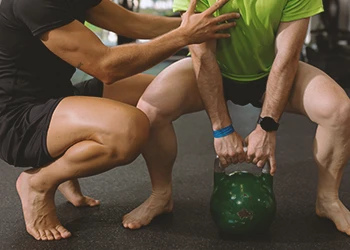
From my experience training clients, kettlebell sumo squats, with their wide stance and outward-pointing toes, have been especially effective.
Whether from a goblet or front rack posture, this variation engages the hip adductors and abductors more intensely than conventional squats, offering a unique and beneficial challenge.
3. Kettlebell Split Squat
The split squat also focuses on body posture rather than load position. As a result, you may load it in a goblet posture, a racked position, or with your hands holding the kettlebells down.
Because this is a unilateral squat, your core and glutes must work hard to balance you. Lower leg muscles such as the quadriceps, glutes, hamstrings, and calves are exercised.
4. Kettlebell Overhead Squat

As a trainer, I've seen clients make remarkable progress with the kettlebell overhead squat. It demands great mobility, engaging not just the lower body but also the lower traps, triceps, deltoids, and serratus anterior.
The stability and mobility offered by this exercise, with the involvement of upper trapezius and rhomboids, make it an all-encompassing workout for the entire body.
5. Kettlebell Swing Squat
This is an example of a dynamic squat version.
This will enhance your heart rate, help you hit the hamstrings harder (since it incorporates a kettlebell swing and a hip-hinge activity), and generate explosive hip strength.
It also trains your glutes and quads since each rep includes a squat.
Related: Will Kettlebell Swings Burn Belly Fat: What You Need to Know
The Muscles Worked

The kettlebell squat is a compound exercise that engages many muscular groups:
- Quadriceps: The quadricep muscles are the primary movers in kettlebell squats. The quadriceps are the muscles along the front of your leg, including the rectus femoris, vastus intermedius, medialis, and lateralis [1].
- Hamstrings: Hamstring muscles are essential for walking, running, bending your knees, and extending your legs [2]. During the kettlebell goblet squat, they are a secondary mover. They provide leg support throughout the repetitions.
- Core: The core works hard to maintain your body and keep your chest erect since the kettlebell squat is front-loaded.
- Glutes: The glutes are another major muscle group involved in the kettlebell squat. The glute muscle groups comprise the gluteus minimus, maximus, and medius [3]. The gluteus maximus is the major muscle involved in the squat.
- Calves: During the kettlebell squat, the calves help to stabilize the ankles and knees.
- Shoulders: The anterior delts assist in moving your arm forward. They are attached to your clavicle [4]. The anterior deltoid muscle groups work hard to maintain the kettlebell in front of the chest in the squat position.
- Biceps: The biceps sustain the kettlebell's goblet posture isometrically for the length of the repetitions. In addition to mobility, the biceps is responsible for supporting the humeral head in the shoulder joint [5].
Benefits of Kettlebell Squats

While your body weight is sufficient, and there are several devices available that will perform well for squats, kettlebells offer certain distinct advantages, including:
- Increasing core stability and strength. A 2012 study compared the effects of 6 weeks of traditional weightlifting with kettlebell training in healthy men on strength (back squat 1RM) and power (vertical jump and power clean 1RM). The results showed that both types of exercise were effective in increasing these abilities [6].
- Improving coordination, balance, and proprioception (knowledge of your body's position in space)
- Strengthening the grip (an essential factor in many lifts)
- Increasing flexibility, mobility, and range of motion to improve posture
- Simple to progressive overload (increasing the stimulus imposed on your body to gain muscle and strength).
Potential Risks With Kettlebell Squats
As a personal trainer, I've encountered various potential risks linked to kettlebell squats. Some of the more common ones include:"
- Risk of Lower Back Injury: The American Chiropractic Association warns that improper form during kettlebell squats can lead to lower back injuries, emphasizing the need for correct technique.
- Potential for Knee Strain: The Arthritis Foundation cautions that kettlebell squats might exacerbate knee pain or injury, especially if performed incorrectly or with excessive weight.
- Shoulder and Neck Tension: Physical therapists note that incorrect handling of the kettlebell can lead to undue stress on the shoulders and neck.
- Risk of Overtraining: The Sports Medicine division of the Mayo Clinic advises that excessive kettlebell training, including squats, can lead to overtraining syndrome, impacting overall health and fitness progress.
- Not Suitable for All Fitness Levels: The Centers for Disease Control and Prevention suggest that kettlebell squats may not be suitable for individuals with certain health conditions or those new to exercise, requiring modifications or alternative exercises.
The Mistakes To Avoid

- Forward Chest - Many individuals like to lean forward in the squat posture, which might lead them to fall forwards and potentially develop back and spinal problems. To avoid injury, maintain appropriate posture at all times.
- Knees Crossing The Toe Line - When you include a weight, your weight distribution changes, so be cautious not to let your knees pass the toes. Throughout the exercise, keep your knees behind your toes.
- Wonky Elbows - If you see your elbows starting to stretch out too much, consider switching to a lesser weight or keeping an eye on it and reminding yourself to keep the elbows tucked in.
- Your Breathing - Breathe once every squat, inhaling as you move downward and exhaling as you move back up. Excessive or insufficient breathing can cause dizziness and injury.
Kettlebell Squats Alternatives

Zercher Squat
The Zercher squat is unconventional, but it works. Instead of being supported by the chest, the weight is held by the creases of your elbows. It is not for everybody since it is uncomfortable, but it may be reduced by using a bar pad.
Hack Squat
The hack squat enables you to squat with the weight while not placing any strain on your back.
If you have back problems, it will allow you to focus on your quadriceps and legs without straining your upper body.
The position also aids in keeping your torso straight and your core engaged in safeguarding your spine. With the load behind your back, you'll train the midfoot and heels to drive into the floor, which will be useful for subsequent standing barbell exercises.
Deadlifts
Consider deadlifts if you're searching for a squat-free alternative to the kettlebell squat. Like squats, deadlifts are an established compound movement that strengthens your lower body. You'll also get an excellent back exercise out of it.
"While deadlifts cannot totally replace squats, they may be an excellent substitute if you are unable to perform squats for whatever reason."
- Micky Lal, Certified Strength & Conditioning Specialist
FAQs
Are Squats With a Kettlebell Effective?
Yes, squats with a kettlebell are effective. The kettlebell is great for squats because of its distinct holding positions. Squatting with a kettlebell improves joint health, is extremely cardiovascular, and is an excellent fat-burning exercise.
How Heavy Should My Kettlebell Be for Squats?
The optimal kettlebell size for an average active man performing kettlebell squats is 40 lbs. The optimal kettlebell squats size for average active ladies performing the squats is 25 lbs.
Can You Build Muscle With Kettlebell Squats?
Yes, you can build muscle with kettlebell squats. Kettlebell squats engage the core, upper, and lower body since you must hold the weights in a front rack posture.
References:
- https://www.ncbi.nlm.nih.gov/books/NBK538425/
- https://www.ncbi.nlm.nih.gov/books/NBK546688/
- https://www.researchgate.net/publication/26338168_
- https://www.ncbi.nlm.nih.gov/books/NBK537056/
- https://www.ncbi.nlm.nih.gov/books/NBK519538/
- https://www.ncbi.nlm.nih.gov/pmc/articles/PMC6458586/
About The Author
You May Also Like
